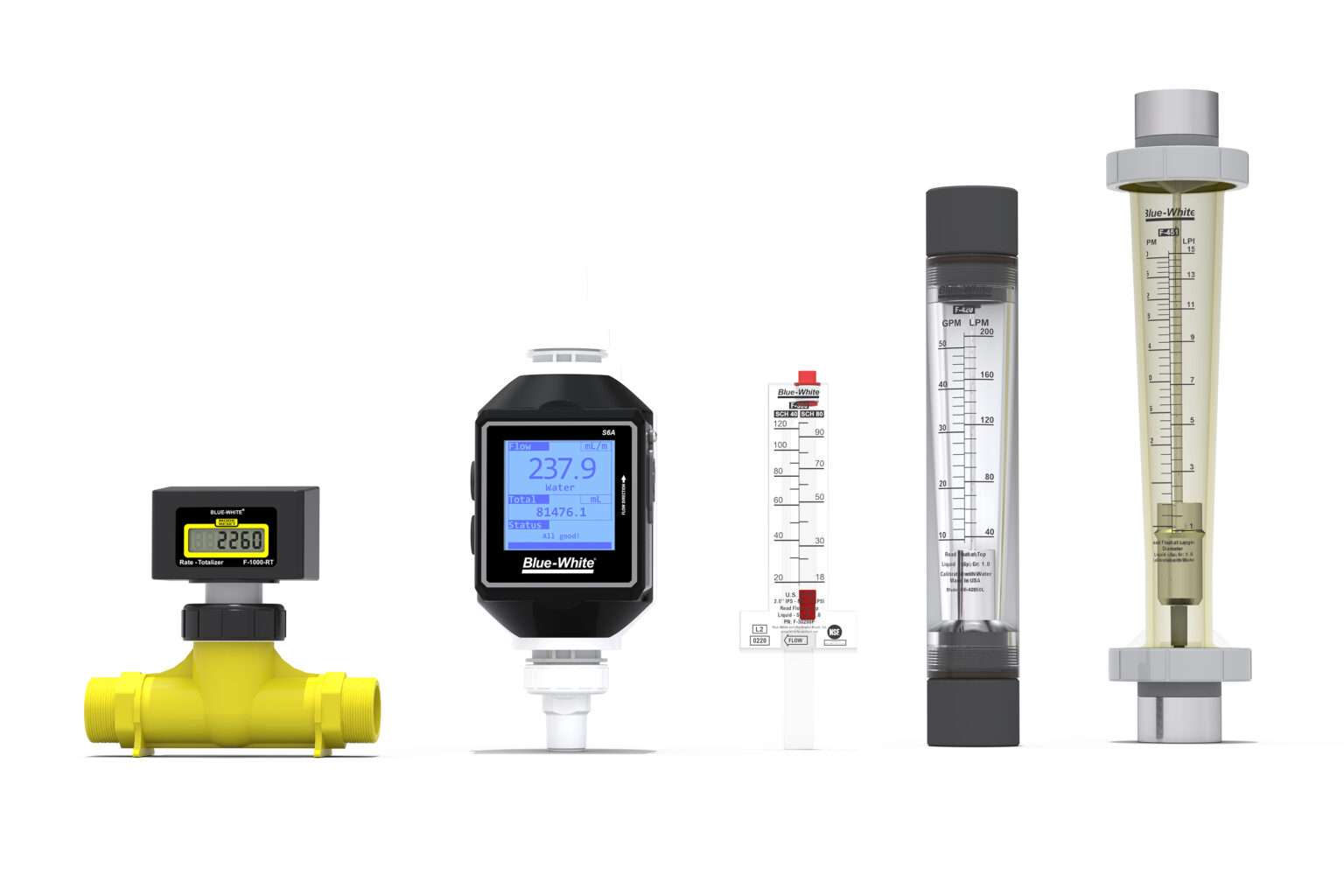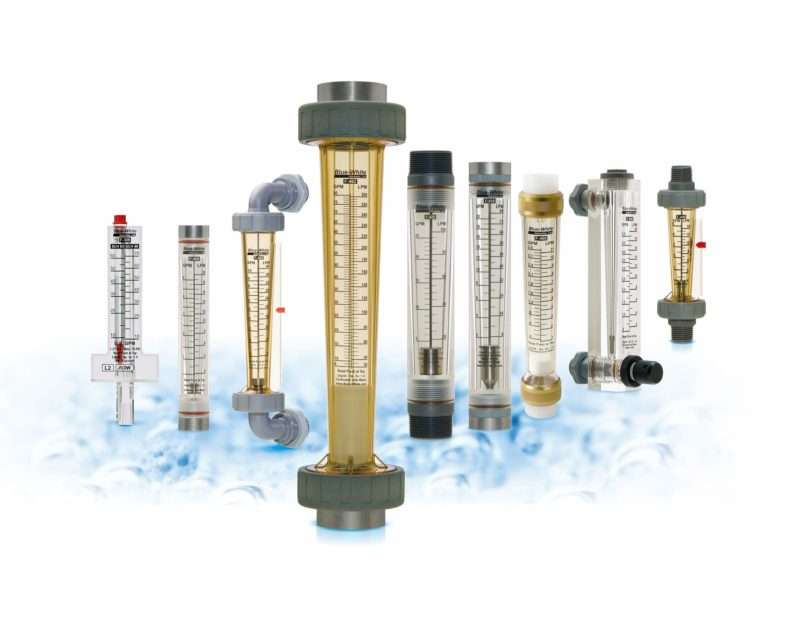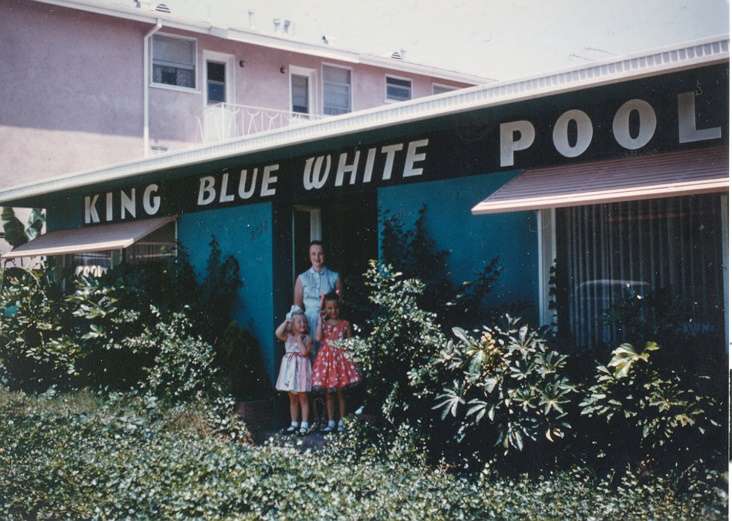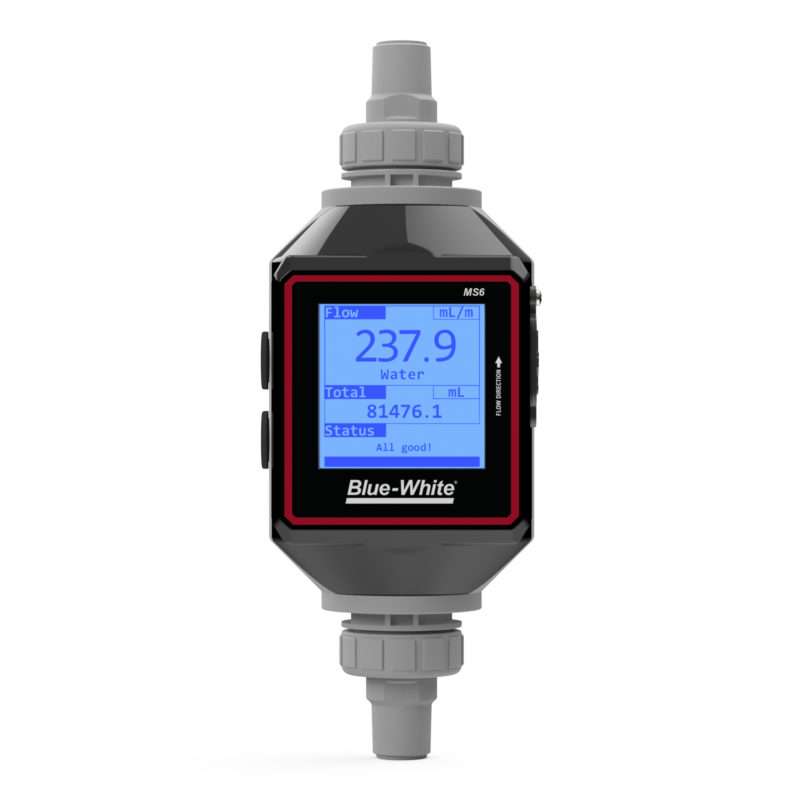Flow Meters

Blue-White® Flow Meters
Flow rate measurement is a critical parameter in many fluid applications. Blue-White® manufactures robust, precise industrial-grade flow meters to measure fluid volume accurately, ensuring smooth, safe, and cost-effective processes. Blue-White® offers variable area flow meters (rotameters), paddlewheel, and ultrasonic flow meters, all Made in the USA and ready to ship!

Explore Flow Meter Technologies
Variable Area Flow Meters
Available in polysulfone and acrylic models, our direct-reading flow meters provide an economical and accurate method of measuring flow.
Discover Products
Paddlewheel Flow Meters
Digital paddlewheel flow meters offer a pipe size range of 3/8” to 12”. Functions include rate, total, analog output, batch processing, and flow rate alarm.
Discover Products
Ultrasonic Flow Meters
Blue-White’s ultrasonic chemical flow meters accurately measure liquid chemical feed with flow rate readings as low as 10 mL/min.
Discover Products
Explore Articles
Flow Meter FAQs
Their common feature is the measurement of flow. Flow meters can measure the volume of water moving through an open channel or a closed conduit. There are several key features that need to be considered when determining the effectiveness of a flow meter for an application. Remote monitoring or direct reading, types of data required, and the frequency of data collection are just a few of those factors.
The following are descriptions of the different applications for flow meters:
Fluid and Flow Characteristics
Pressure, conductivity, temperature, density (or specific gravity), permissible pressure drop, viscosity, and vapor pressure are some of things flow meters measure.
Pressure Ranges
For fluids, in a confined pipe, the force that is applied to move liquid is pressure. The density of the liquid determines the amount of necessary pressure, which indicates the flow rate. When a flow meter measures density and pressure, it uses the data to calculate the flow rate.
Temperature Ranges
A temperature sensor measures the liquids or gases‘ temperature, while a heated flow sensor measures the heat transfer of the material‘s flow.
Most liquid flow monitoring equipment infers flow rate from liquid velocity or kinetic energy change. The pressure differential pushing the liquid through a pipe or conduit determines its velocity. The average velocity measures the flow rate since the pipe’s cross-sectional area is constant. The basic relationship for determining the liquid’s flow rate in such instances is:
- Q = V x A
Where:
- Q: Pipe liquid flow.
- V is the flow’s average velocity.
- A = Pipe’s cross-sectional area.
- Additional elements that affect liquid flow rate include viscosity and density, as well as pipe friction.
The frequency of necessary maintenance and the expected lifetime of flow meters are affected by various factors. Matching the appropriate technology to the specific application is the most important factor. Poorly chosen devices will always have issues. In general, flow meters without moving parts, such as ultrasonic flow meters, need less maintenance than their mechanical counterparts.



